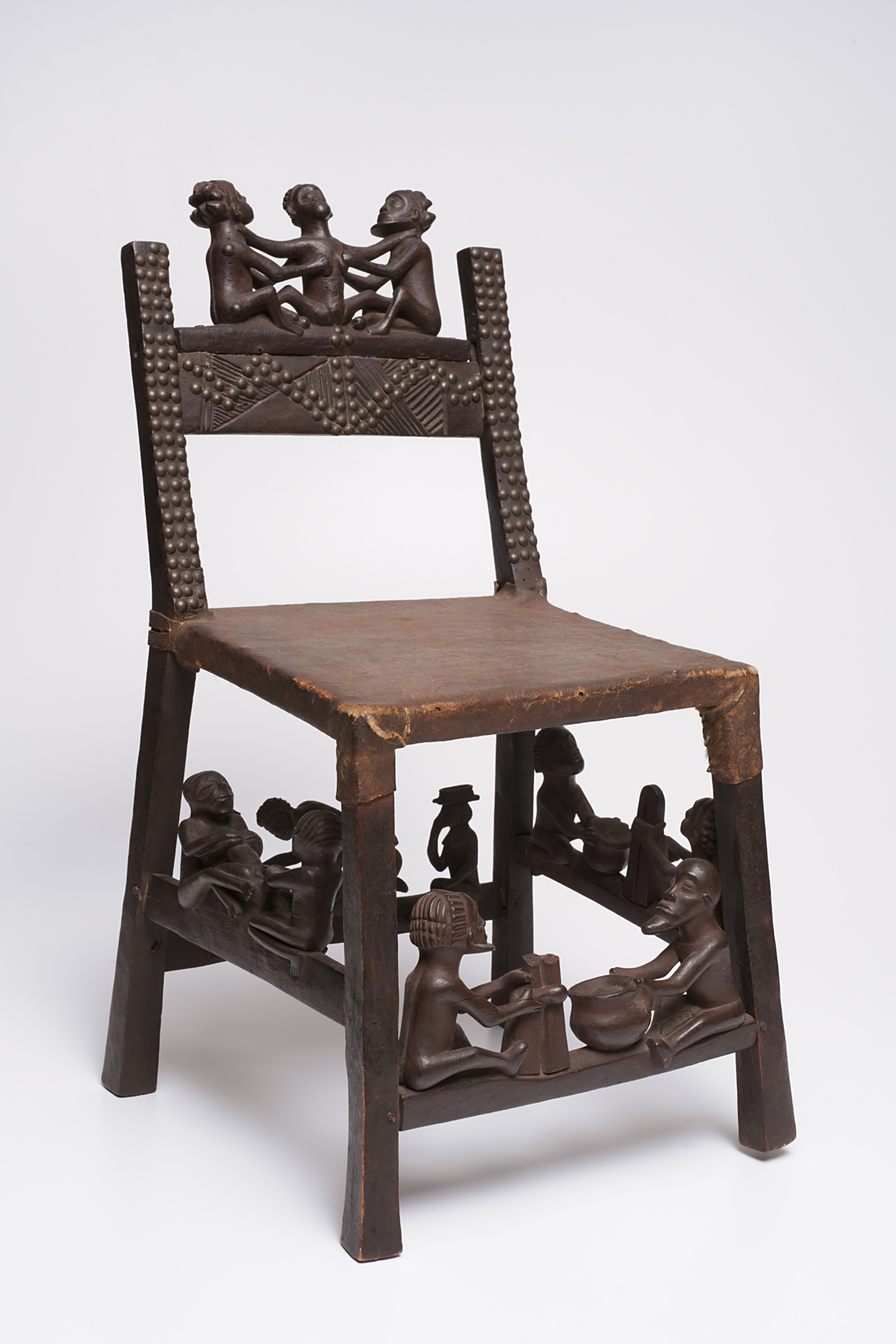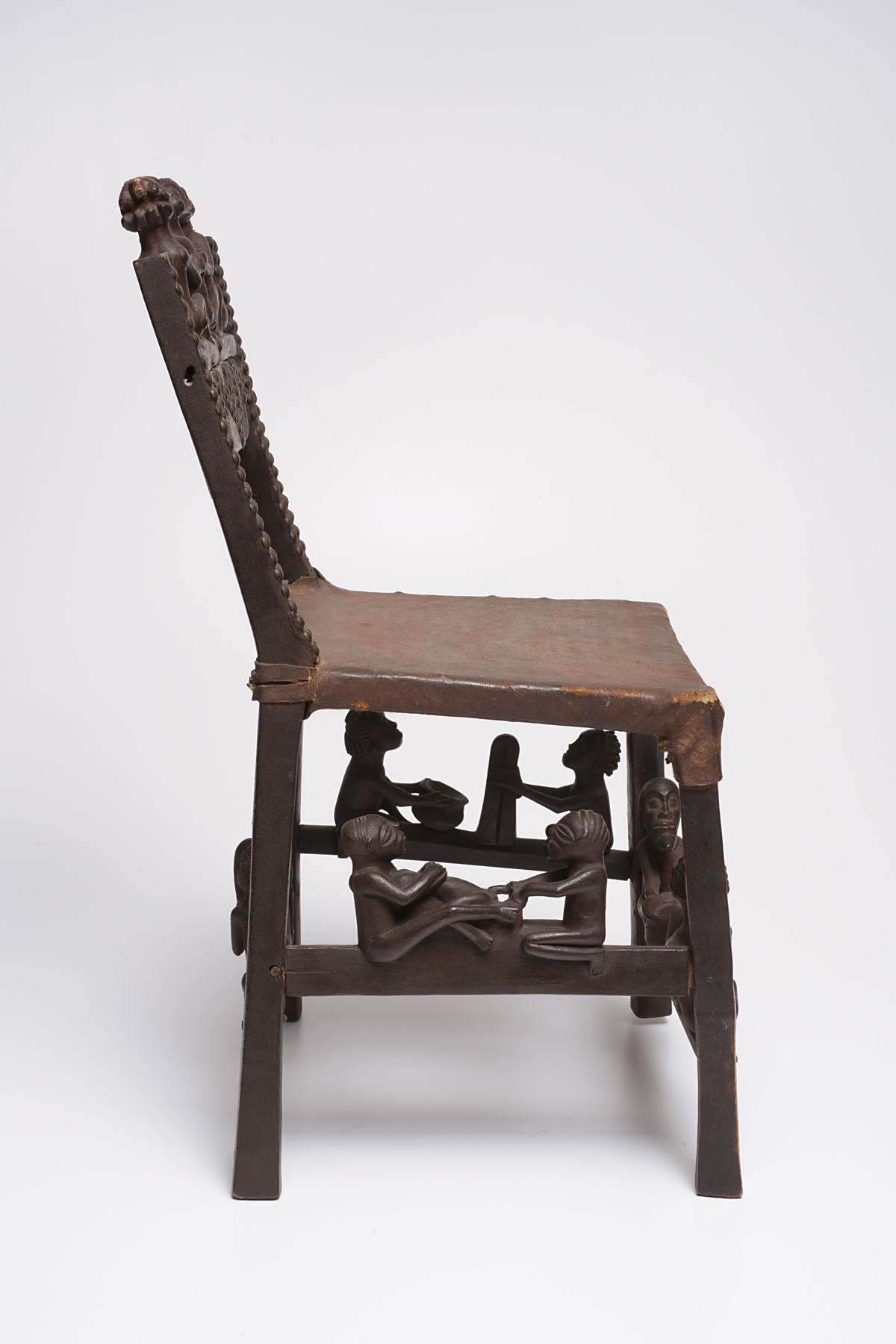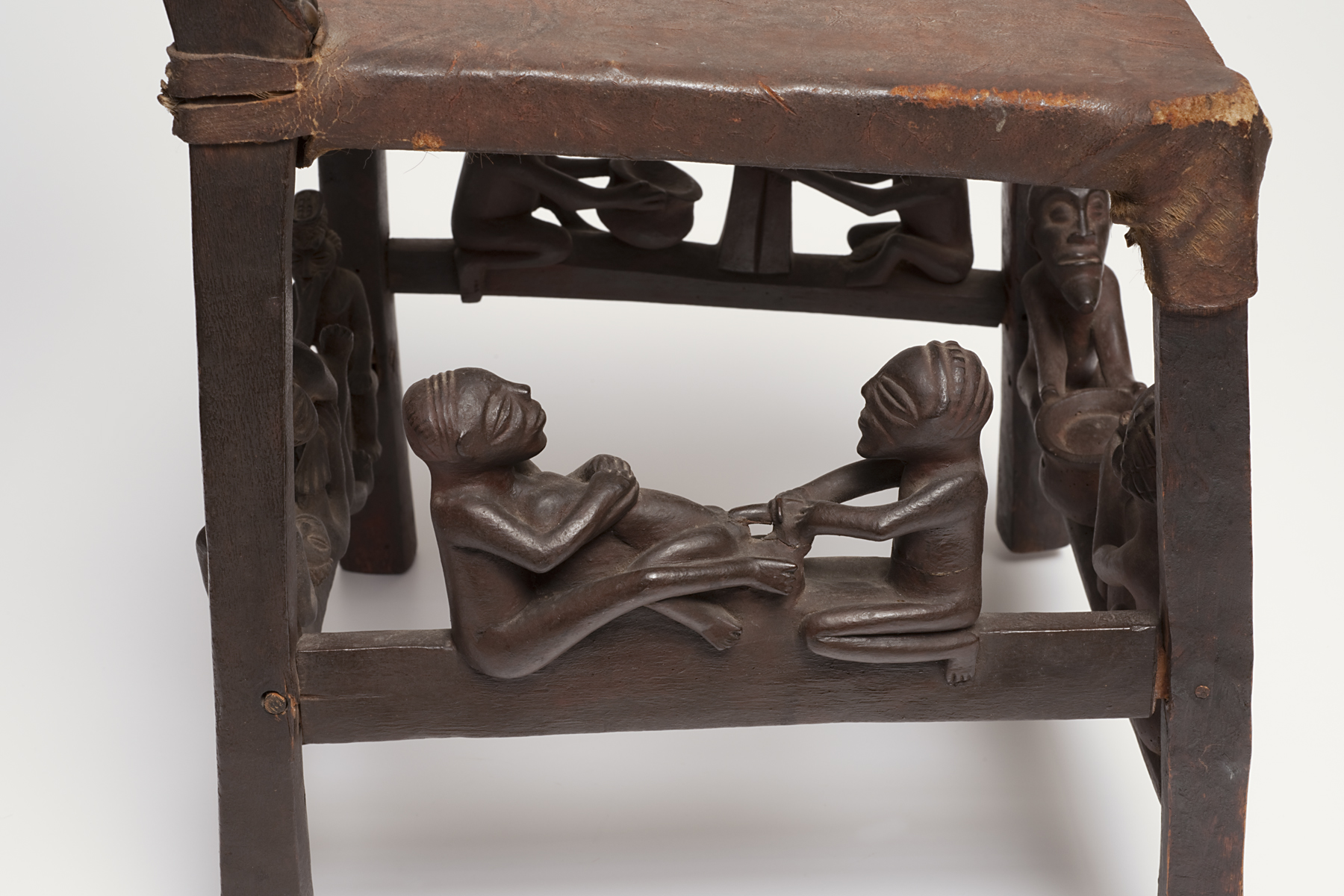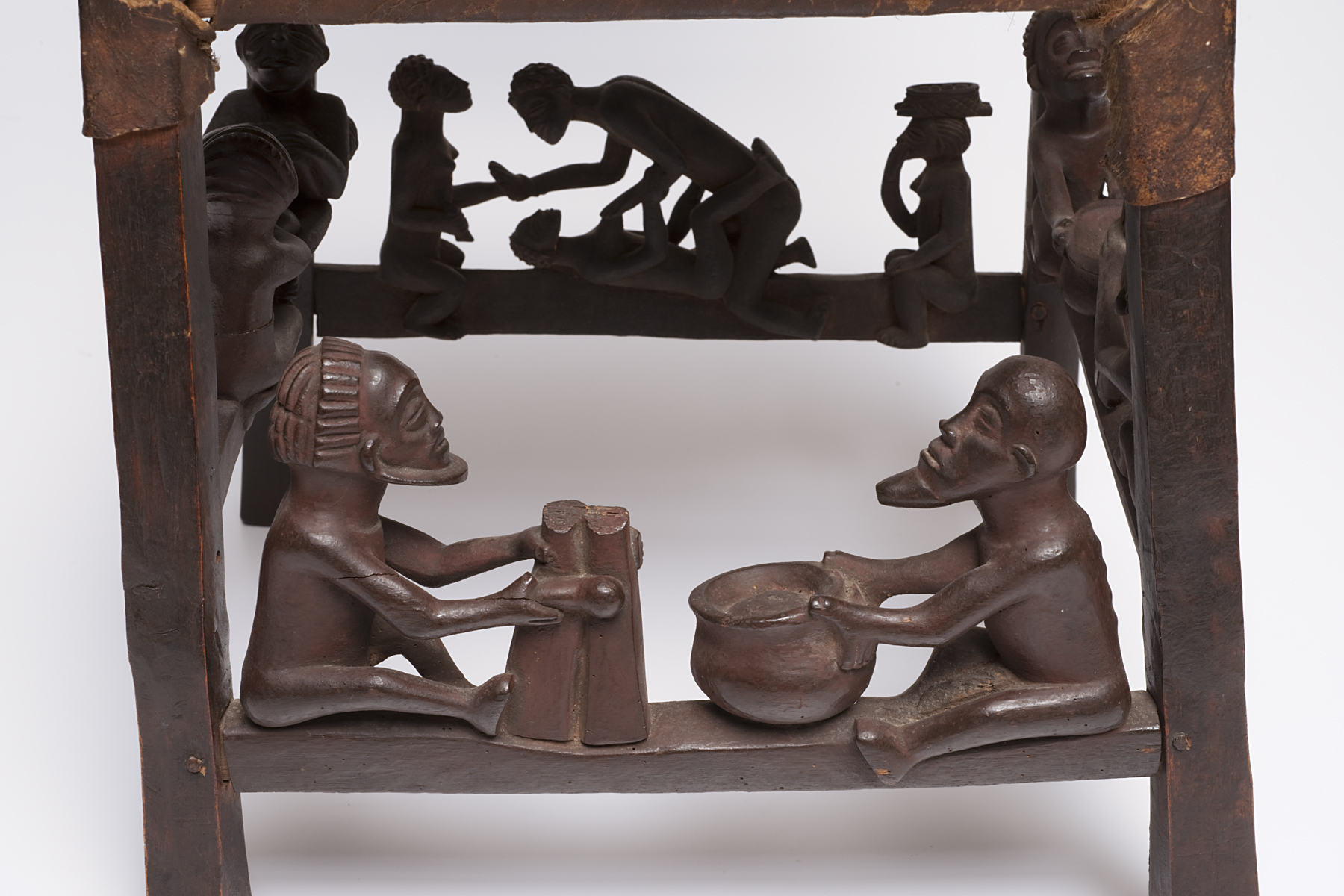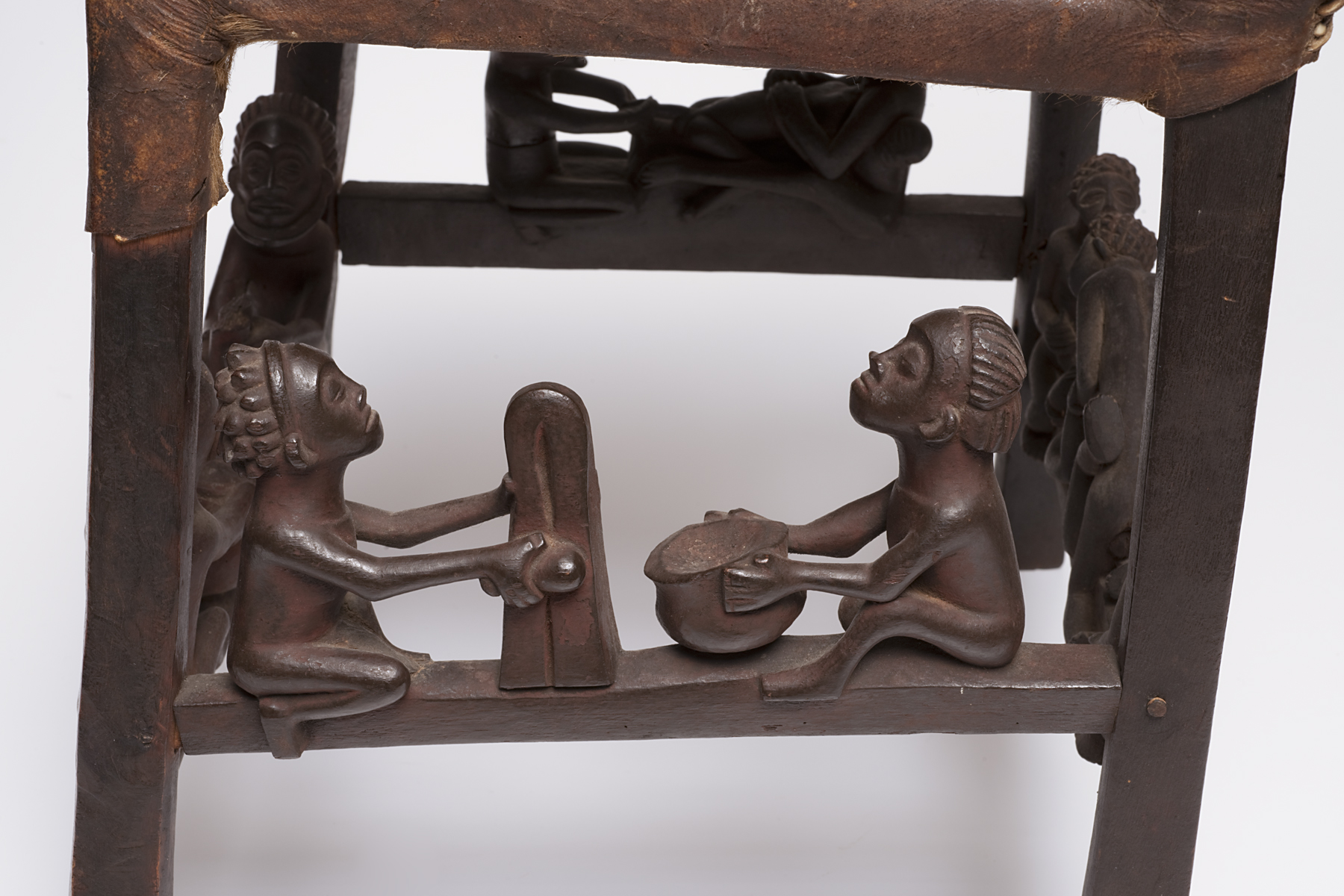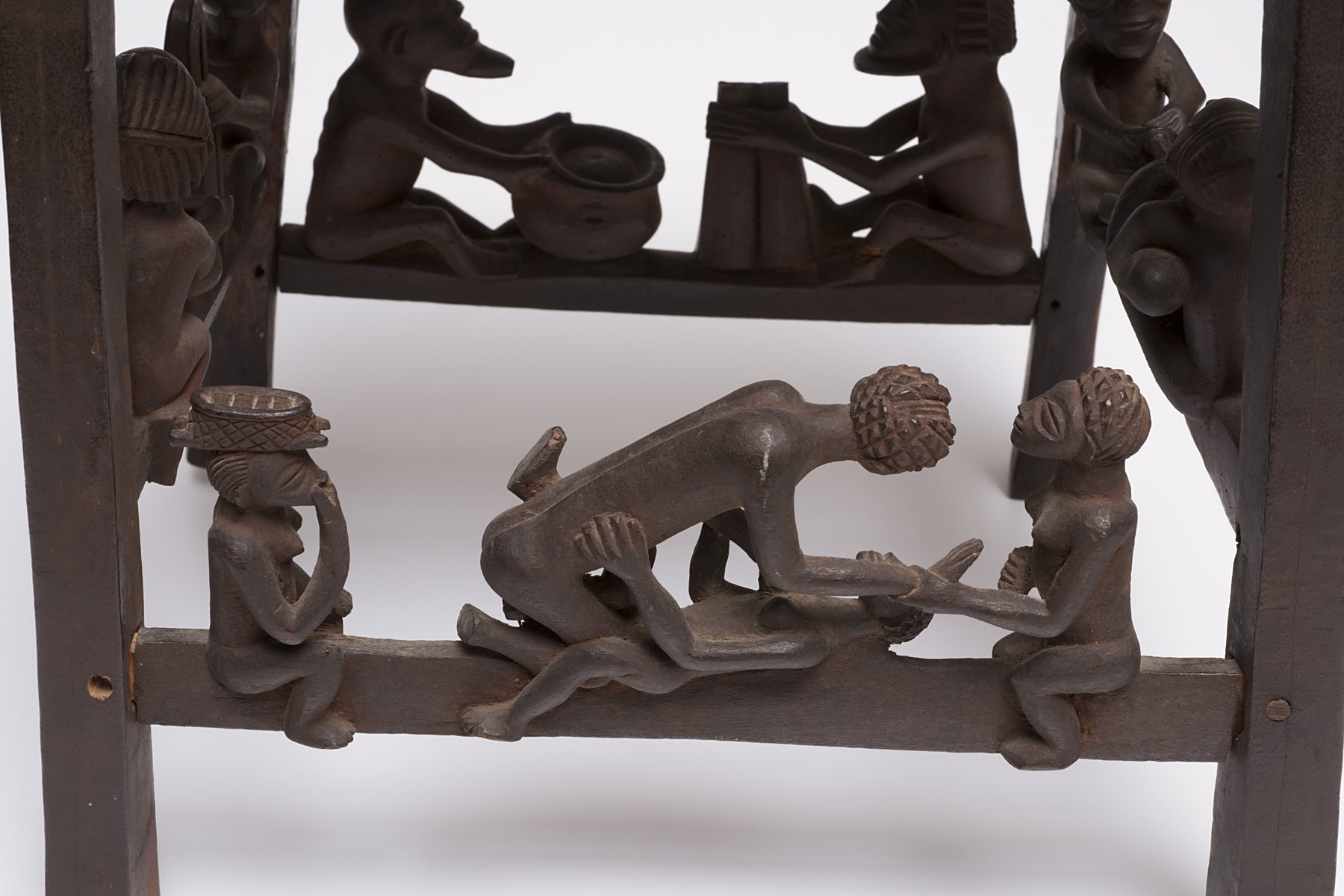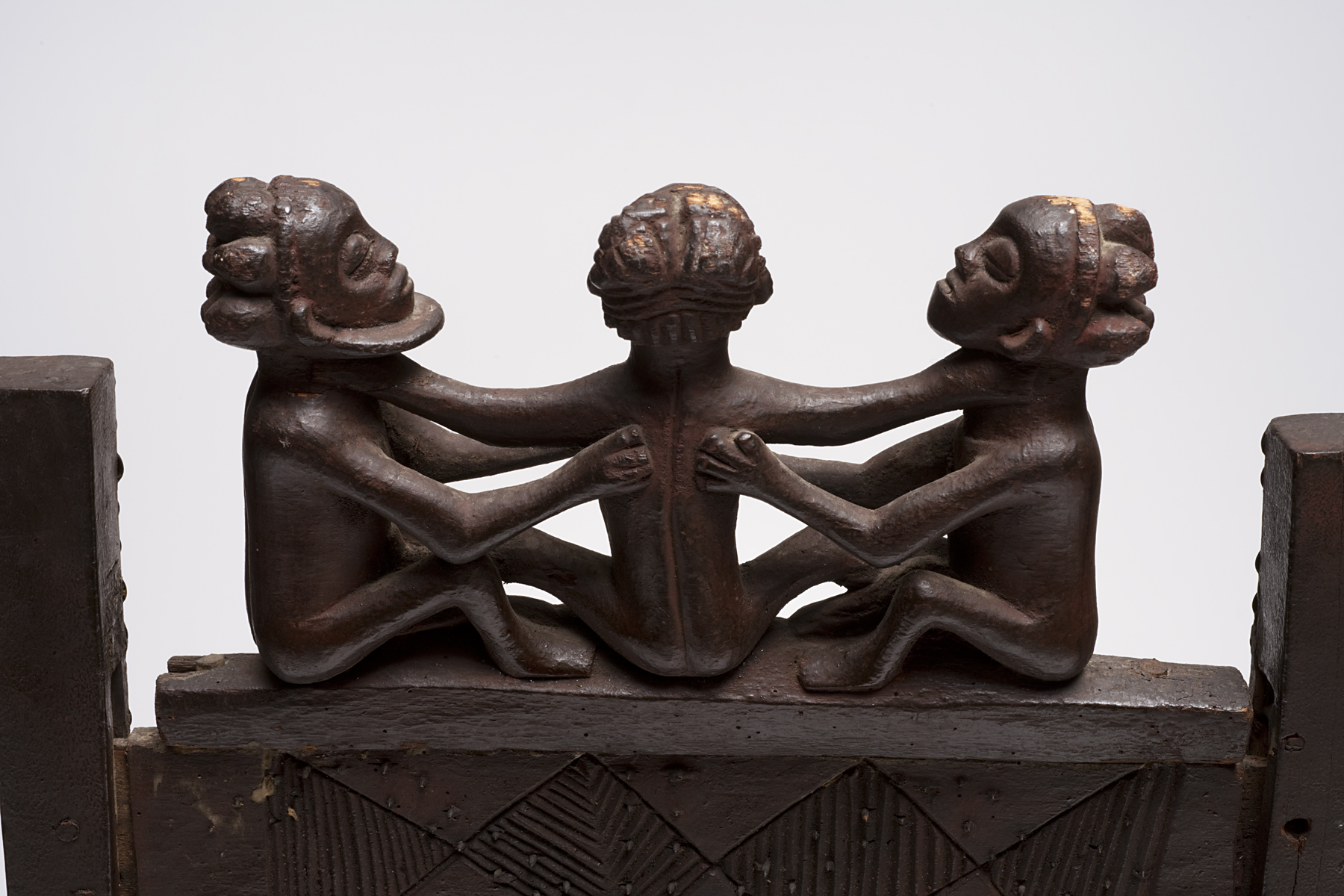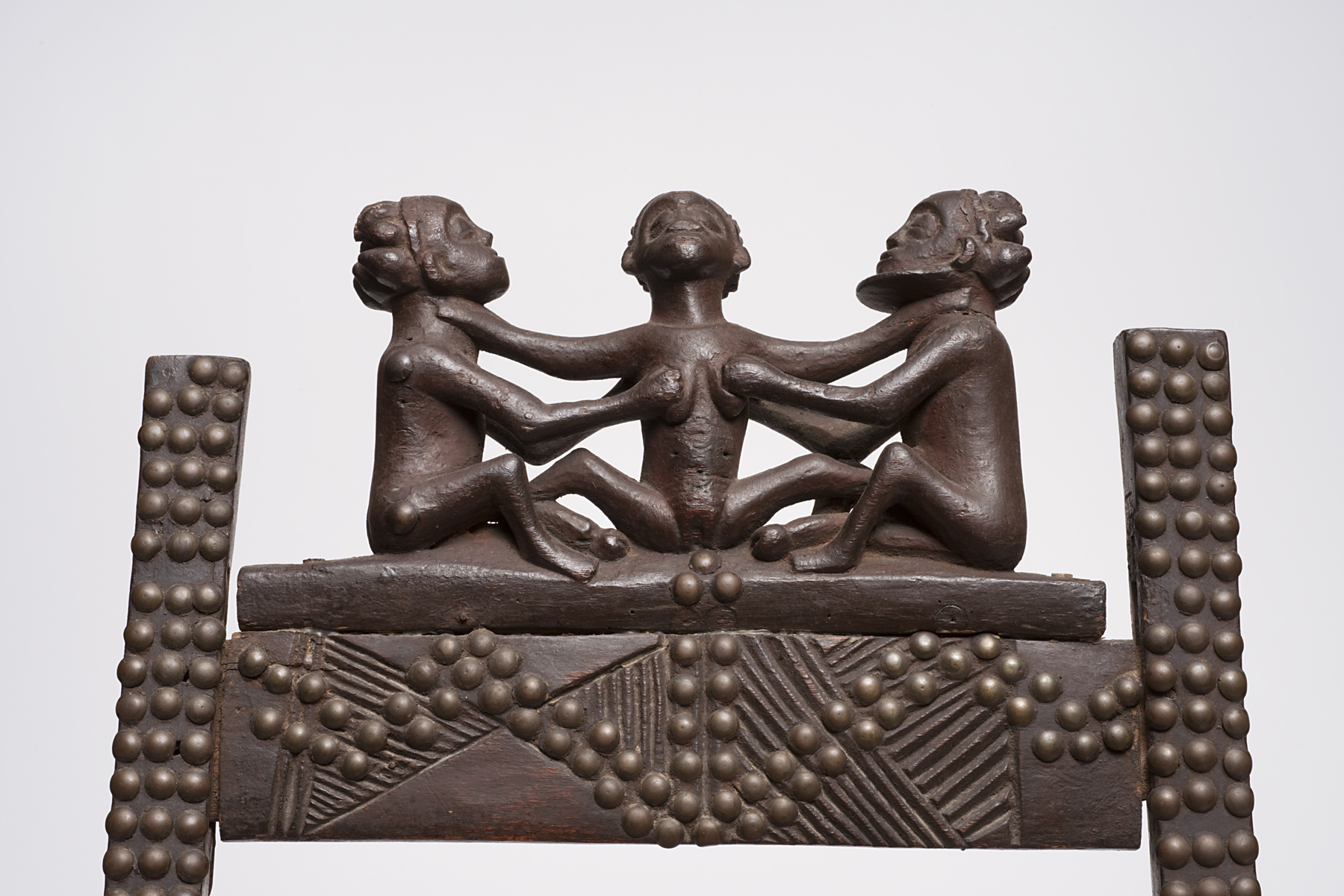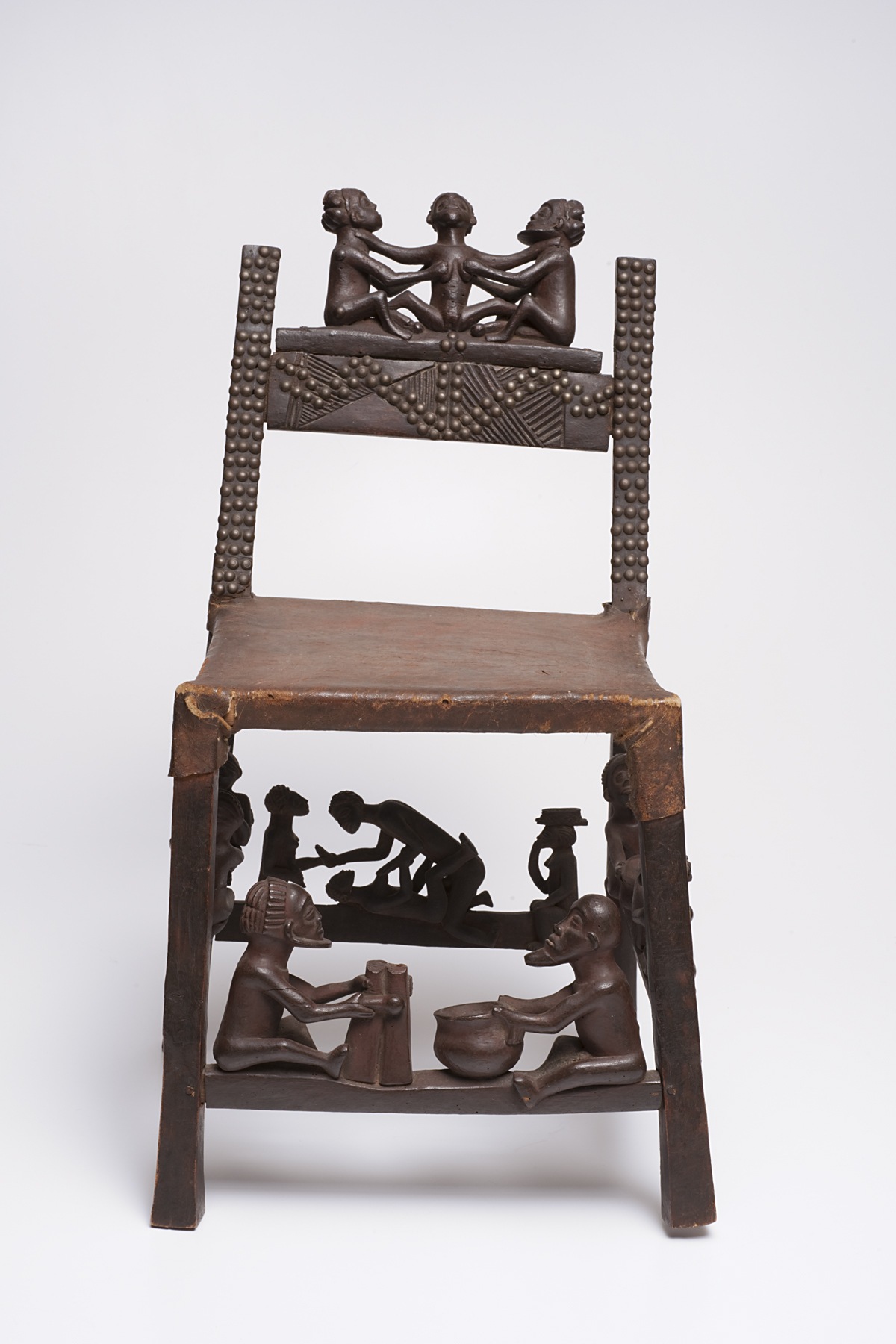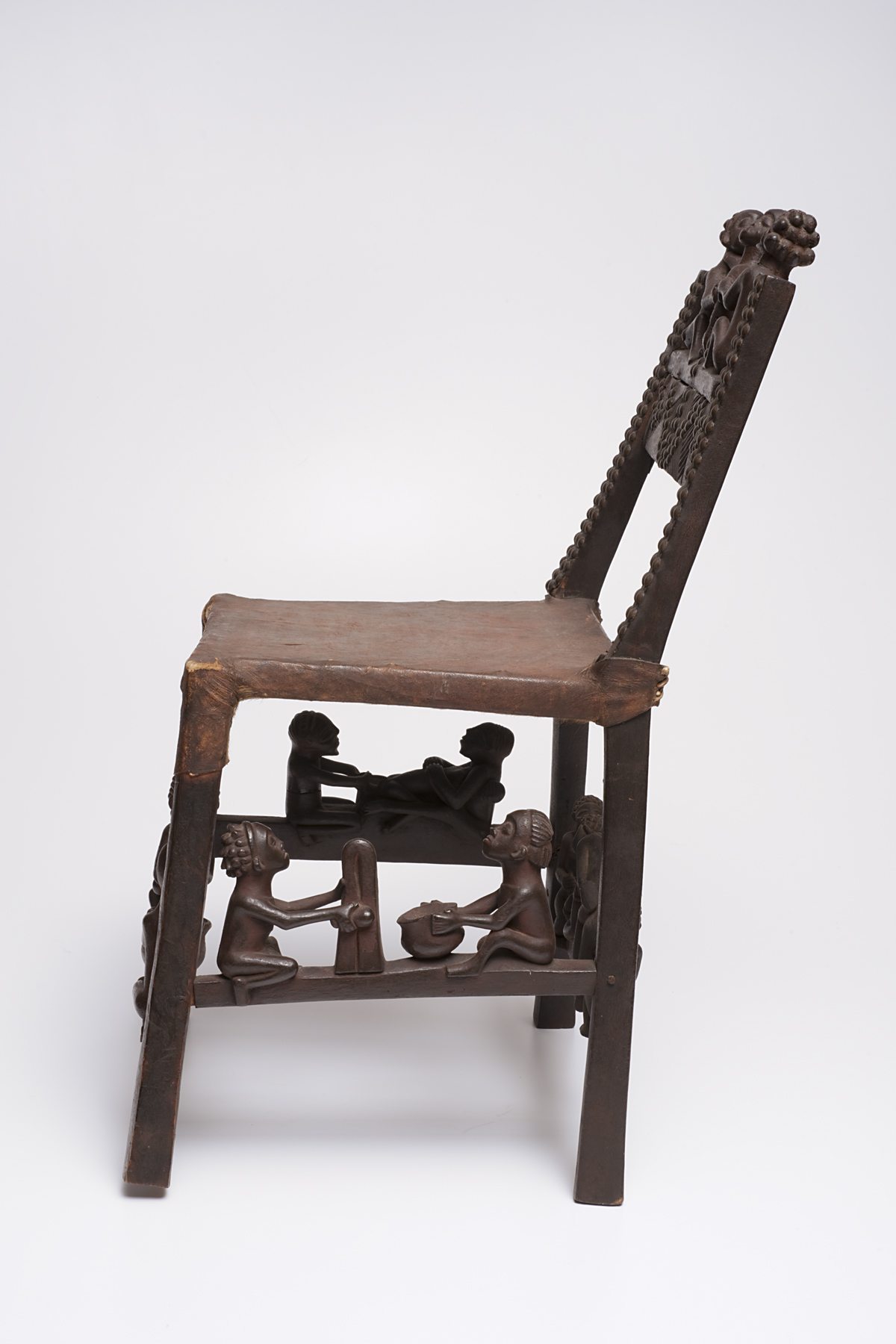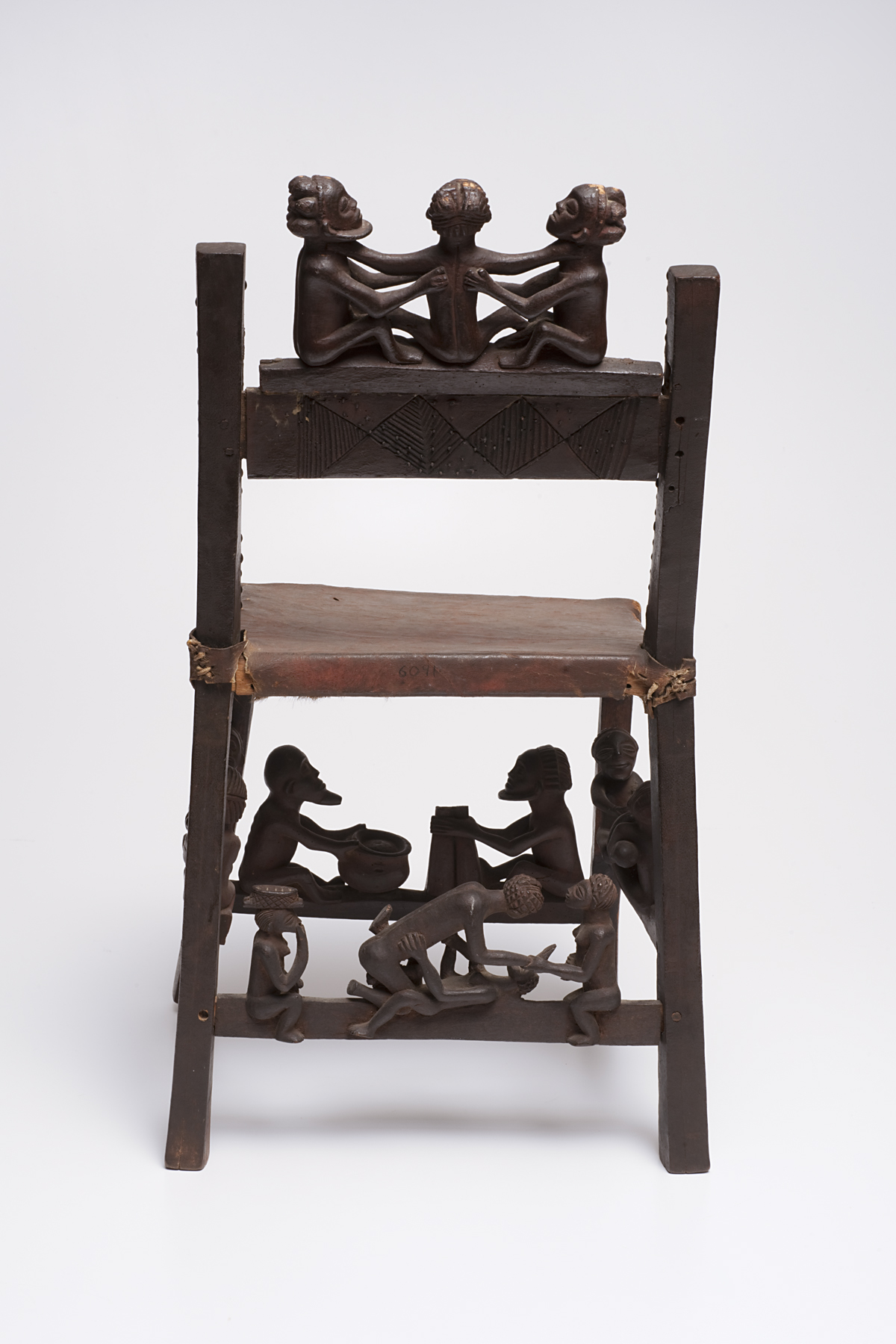ngunja (carved chair), unrecorded Chokwe artist
Artwork Overview
unrecorded Chokwe artist, artist
ngunja (carved chair),
late 1800s–1908
Where object was made: Angola
Material/technique: wood; brass; carving; possibly goat skin
Dimensions:
Object Height/Width/Depth (Height x Width x Depth): 63 x 35.5 x 42 cm
Object Height/Width/Depth (Height x Width x Depth): 24 13/16 x 14 x 16 9/16 in
Object Height/Width/Depth (Height x Width x Depth): 63 x 35.5 x 42 cm
Object Height/Width/Depth (Height x Width x Depth): 24 13/16 x 14 x 16 9/16 in
Credit line: Gift of Claude D. Brown
Accession number: 2007.2542
Not on display
If you wish to reproduce this image, please submit an image request
